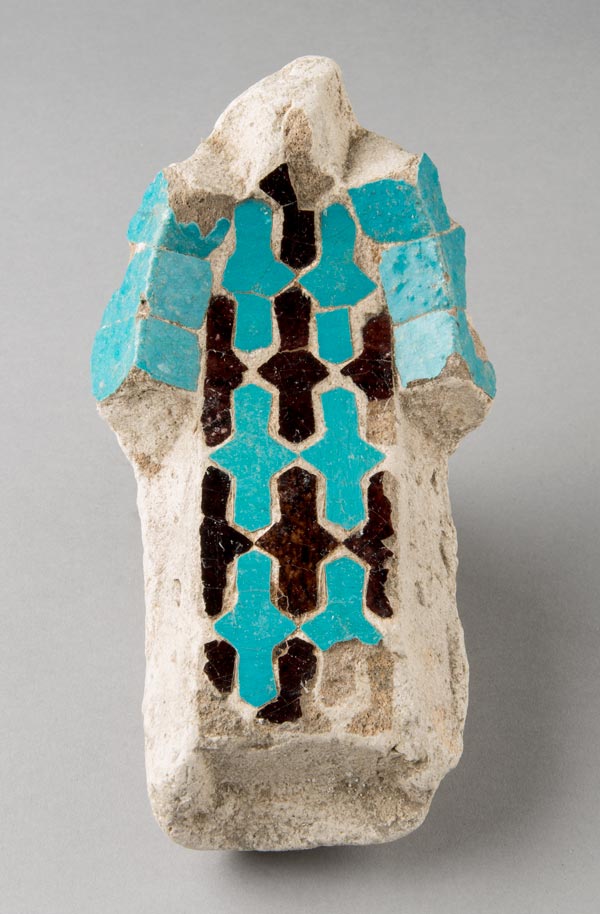Tile Mosaic Muqarnas Fragment
The Show

Tile mosaic muqarnas fragment 13th century, Konya, Turkey Glazed ceramic in plaster Kelsey Museum of Archaeology, 80070
This architectural fragment comprises a single unit of a complex structural formation known as muqarnas. When many of these niche-like units are juxtaposed at different angles and placed on several tiers, they produce a honeycomb effect that plays with color and light patterns. Yet muqarnas are just as functional as they are beautiful. The network of muqarnas niches would be used in the space between the square frame of a building and the circular base of a dome, thus embellishing an otherwise awkward transition zone. In addition to domes, muqarnas are used in other concave zones such as archways (iwans) and prayer niches (mihrabs). This particular muqarnas fragment was probably made during Seljuk rule in Konya, located in Anatolia (modern-day Turkey). It is decorated with alternating turquoise and deep purple glazed tiles in a manner that resembles a woven pattern. This decorated architectural fragment is just one example among many demonstrating how architects, designers, and artisans "clothed" and decorated buildings in the Islamic world.
Bibliography: Tabbaa 1985; Bloom 1988; Ettinghausen 1995; Baer 1998, 50ff.; Redford 2005; Arık and Arık 2008, 37–189; and Meinecke 1976, pls. 1, 8, 11, 17–18, 20, 26, 29, and 35.
Return to the Show